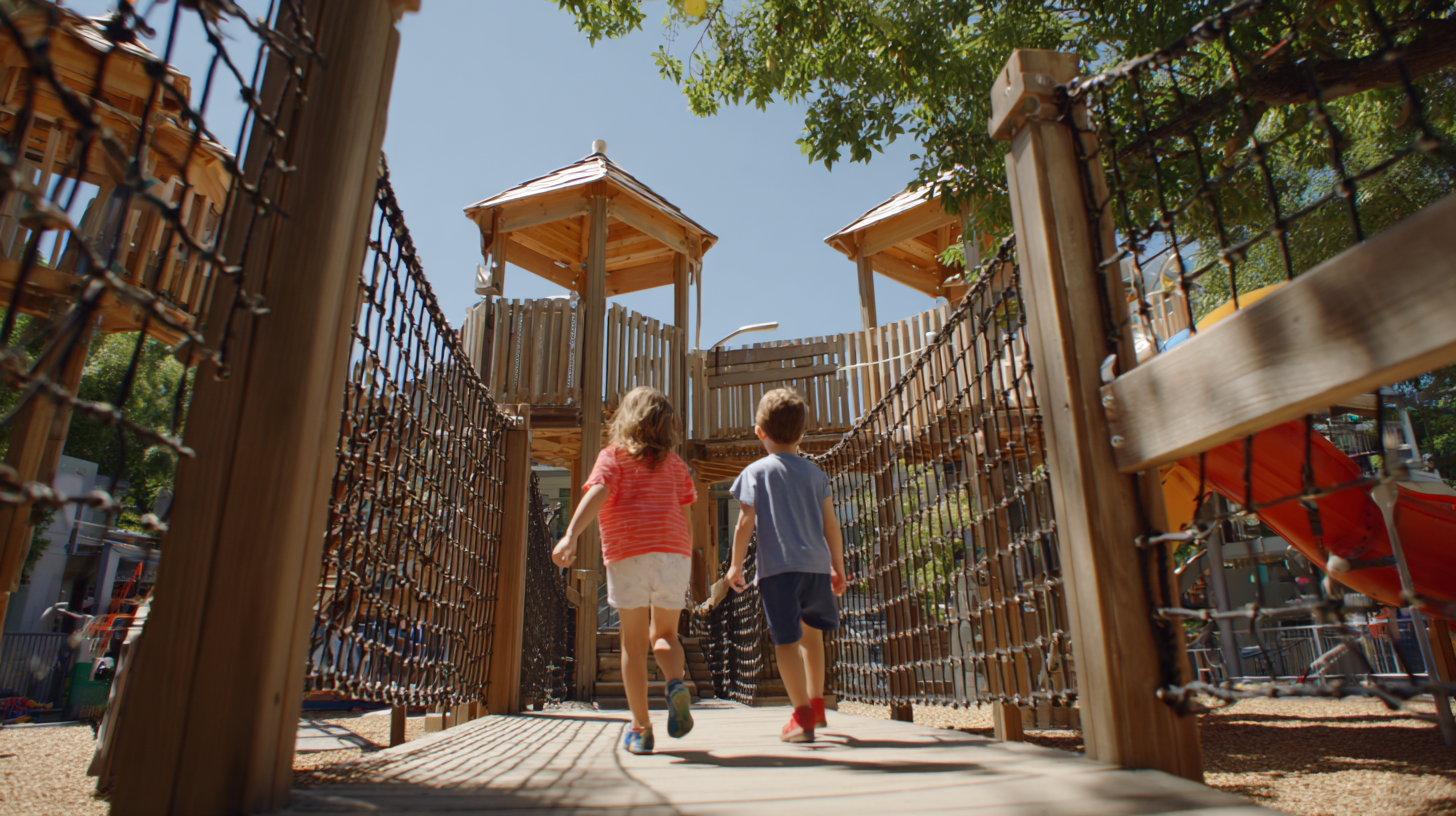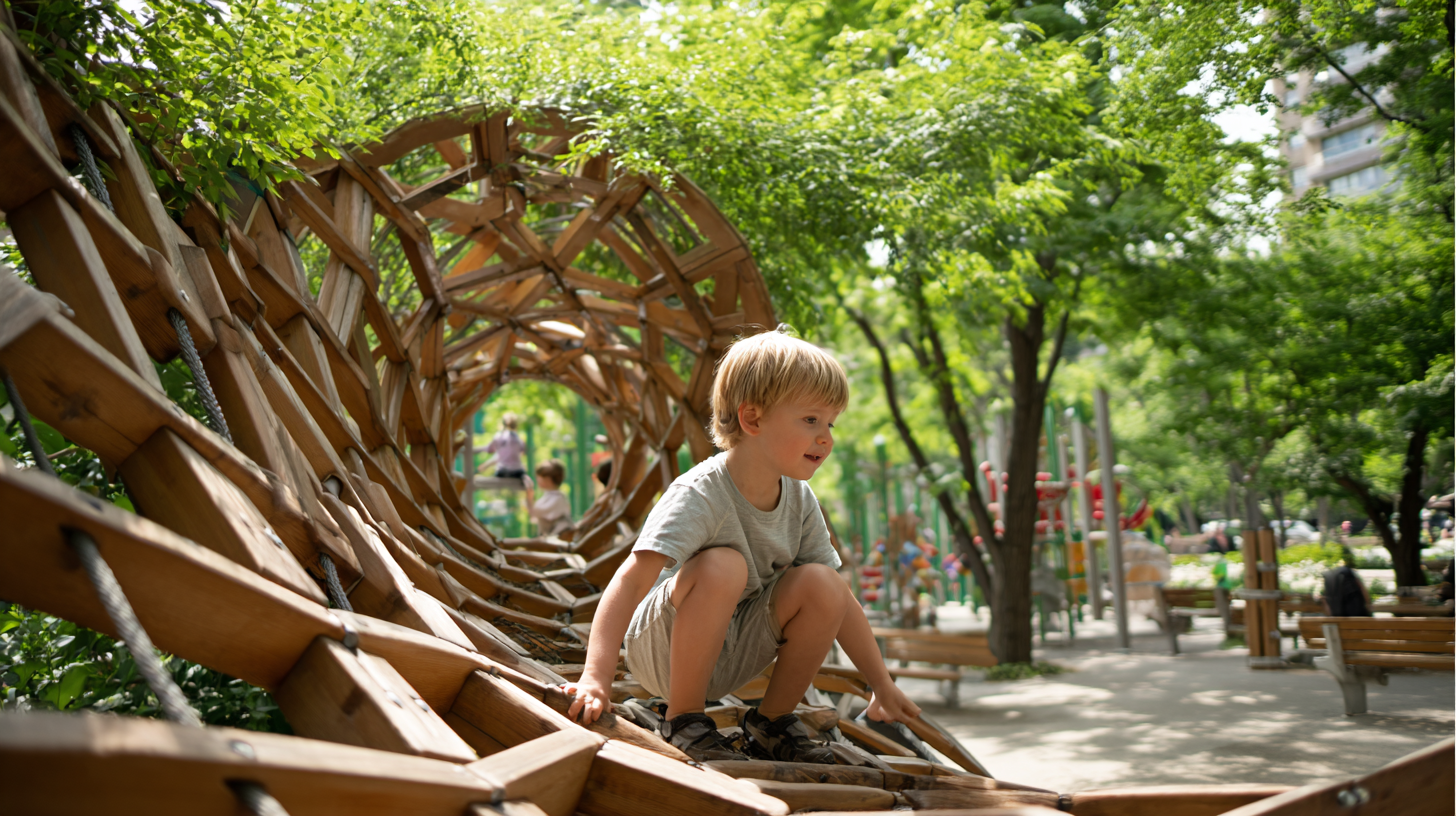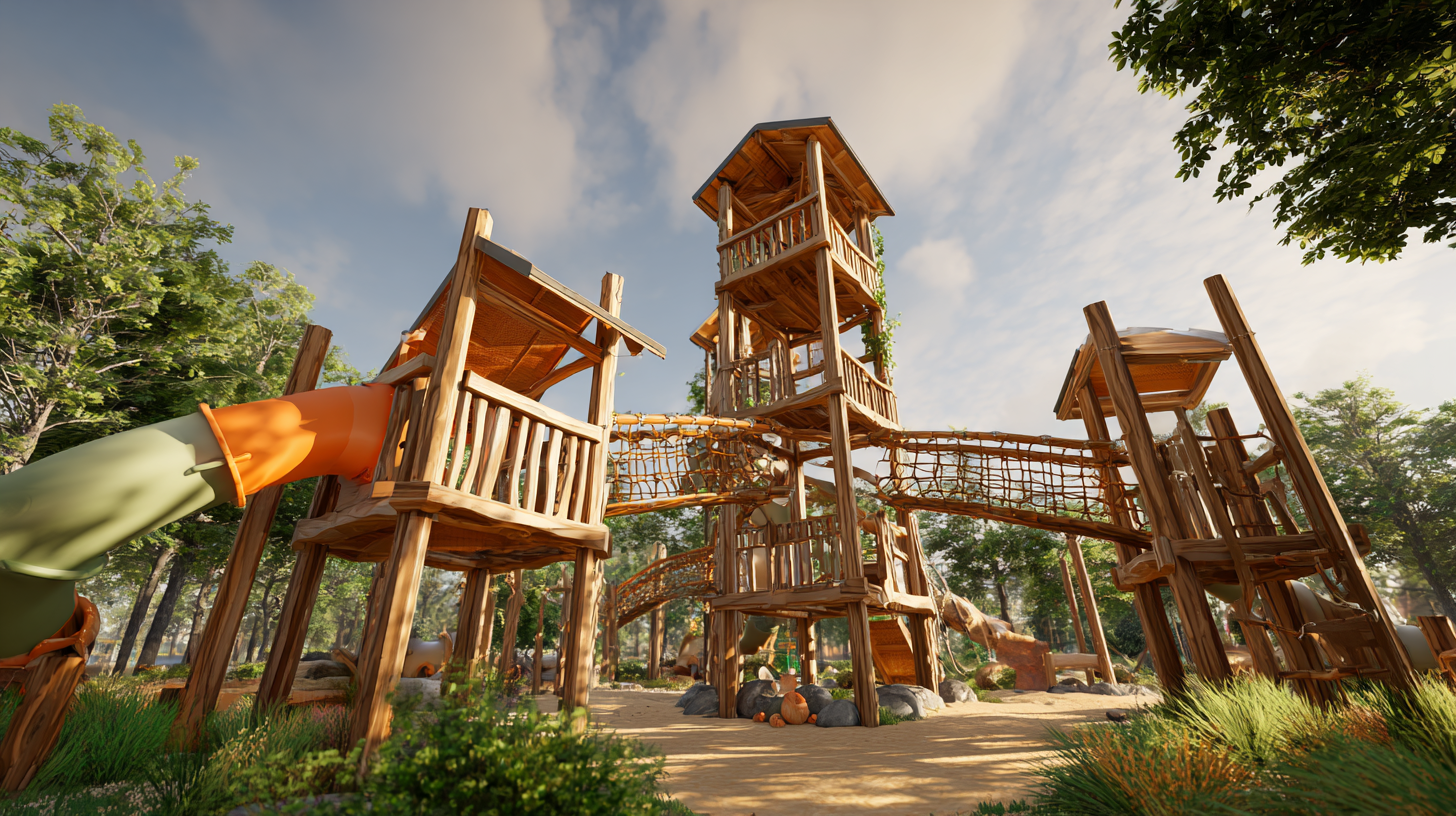 +86-13901441113
+86-13901441113




Creating an engaging Playscape Playground experience for children is essential for fostering their physical, social, and emotional development. A well-designed playground goes beyond mere equipment; it creates an inviting environment where children can explore their creativity, interact with peers, and engage in constructive play. By incorporating elements that stimulate imagination and encourage active participation, we can transform a standard playground into a vibrant playscape that captures the interest of children of all ages. This guide will delve into key strategies for designing a captivating Playscape Playground experience, focusing on the integration of diverse play structures, sensory-rich features, and inclusive designs that accommodate all children, ensuring that every visit is filled with discovery and fun. Join us on this journey to unlock the potential of play while creating a memorable space that children will cherish for years to come.

Creating an engaging playscape playground experience for children hinges significantly on thoughtful design principles that inspire creativity. One of the fundamental concepts is to incorporate a variety of climbing structures and interactive elements that challenge physical abilities while fostering imaginative play. Structures such as rope walls, tree houses, and balance beams can stimulate both gross motor skills and social interaction. Additionally, adding diverse textures, colors, and natural elements encourages children to explore their surroundings and engage with materials in innovative ways.
Furthermore, integrating flexible play areas allows children to adapt the space according to their creative ideas. Movable components, such as loose parts and modular play equipment, encourage open-ended play, empowering children to construct their narratives and play scenarios. Incorporating natural landscapes—like hills, water features, and gardens—can create an immersive environment that inspires curiosity and exploration. These design elements not only enhance the playground's aesthetic appeal but also foster developmental growth, imagination, and collaboration among young users.
| Design Principle | Description | Benefits | Examples |
|---|---|---|---|
| Natural Elements | Incorporate trees, plants, and natural materials to create a sense of nature. | Encourages exploration, stimulates sensory experiences, and promotes environmental awareness. | Wooden climbing structures, sand areas, and water features. |
| Variety of Play Areas | Create distinct zones for different types of play (e.g., active, imaginative, social). | Accommodates various interests and age groups, fostering social interactions. | Swing sets, art zones, and climbing walls. |
| Safety and Accessibility | Design with safety surfaces and ADA-compliant features for all children. | Ensures inclusive play, reducing risk of injury. | Rubberized surfaces, ramps for wheelchairs. |
| Interactive Features | Incorporate movable parts and technology for interactive play. | Engages children’s curiosity and problem-solving skills. | Musical elements, interactive panels, movable sculptures. |
| Community Involvement | Encourage local input in the design process. | Promotes a sense of ownership and pride in the community. | Workshops for children and families during design phase. |
Creating an engaging playscape playground experience for children requires the thoughtful incorporation of natural elements that enhance sensory experiences. Imagine a space where children can traverse a mini Jurassic landscape, interacting with life-sized dinosaurs through augmented reality. This innovative approach goes beyond traditional playground equipment, fostering imaginative play and creating unforgettable adventures that stimulate both mind and body.
To craft such an enriching environment, consider these tips: First, integrate various textures and materials in the playground design, like sand, pebbles, and water features, to provide tactile experiences. Second, include native plants and trees that promote exploration and learning about nature while offering shade and visual appeal. Lastly, use sound elements, such as gentle wind chimes or bubbling streams, to create an immersive auditory experience that captivates children's attention.
By weaving together these natural elements and leveraging modern technology like augmented reality, playgrounds can transform into dynamic environments that inspire children’s creativity and leave lasting impressions. Such innovative designs not only entertain but also educate young minds, making outdoor play an enriching experience.
Creating an engaging playscape playground experience for children requires a thoughtful approach to selecting playground equipment that balances safety standards with adventure. As playgrounds become increasingly popular as spaces for children to explore and develop their physical abilities, ensuring that the equipment installed meets safety regulations is paramount. Recent discussions around the regulation of amusement facilities highlight the critical need for adherence to safety standards to prevent tragic incidents that have occurred in the past, such as injuries and fatalities linked to poorly maintained inflatable attractions.
Adventure can coexist with safety in playground design by incorporating equipment that encourages physical activity while being mindful of potential hazards. For instance, climbing structures, slides, and swings should be designed to challenge children's abilities yet minimize risks. The use of durable materials and regular maintenance checks can enhance safety, allowing for a fun-filled environment where children can unleash their creativity and engage in active play. By prioritizing both excitement and safety, playscape designers can create enchanting playgrounds that inspire confidence and joy among children.

Creating an engaging playscape playground experience requires careful consideration of age-appropriate challenges that significantly foster physical development in children. According to the National Association for the Education of Young Children (NAEYC), play is essential for children's growth, providing them opportunities to develop motor skills, coordination, and balance. By incorporating equipment and activities tailored to various age groups, children can enhance their physical abilities in a safe and supportive environment.
For instance, a study published in the "Journal of Environmental Psychology" highlights that children aged 2-5 benefit greatly from activities that encourage climbing and running, as these activities promote not only physical health but also social skills and problem-solving. Incorporating elements like small climbing walls, gentle slides, and obstacle courses can provide challenges that are both fun and beneficial. Similarly, for older children aged 6-12, more complex structures like zip lines and challenging climbing apparatuses can stimulate risk-taking and confidence while developing strength and agility. According to the Centers for Disease Control and Prevention (CDC), children who engage in physical activity have a lower risk of obesity and related health issues, making it vital to design playgrounds that not only entertain but also challenge and motivate young users to move and explore.
Engaging the community is essential for creating a playscape that truly meets the needs and desires of children and their families. By involving parents and local stakeholders in the playground design process, planners can ensure that the resulting space is not only fun and interactive but also caters to diverse perspectives and community values. Successful strategies might include hosting collaborative workshops where families can share their ideas, conducting surveys to gather input from a broader audience, and creating opportunities for community members to participate in the actual design and construction of the playground.

Moreover, fostering a culture of engagement can empower parents and stakeholders, making them feel a sense of ownership over the playscape. This can be achieved by leveraging existing community networks and encouraging ongoing participation, ensuring that the playground remains vibrant and relevant. Research indicates that community-led initiatives, which incorporate local insights, can lead to more equitable governance and stronger community ties. When parents and stakeholders have a voice in playground design, they are more likely to champion its use and maintenance, creating an environment where children can thrive and grow in a supportive community setting.





